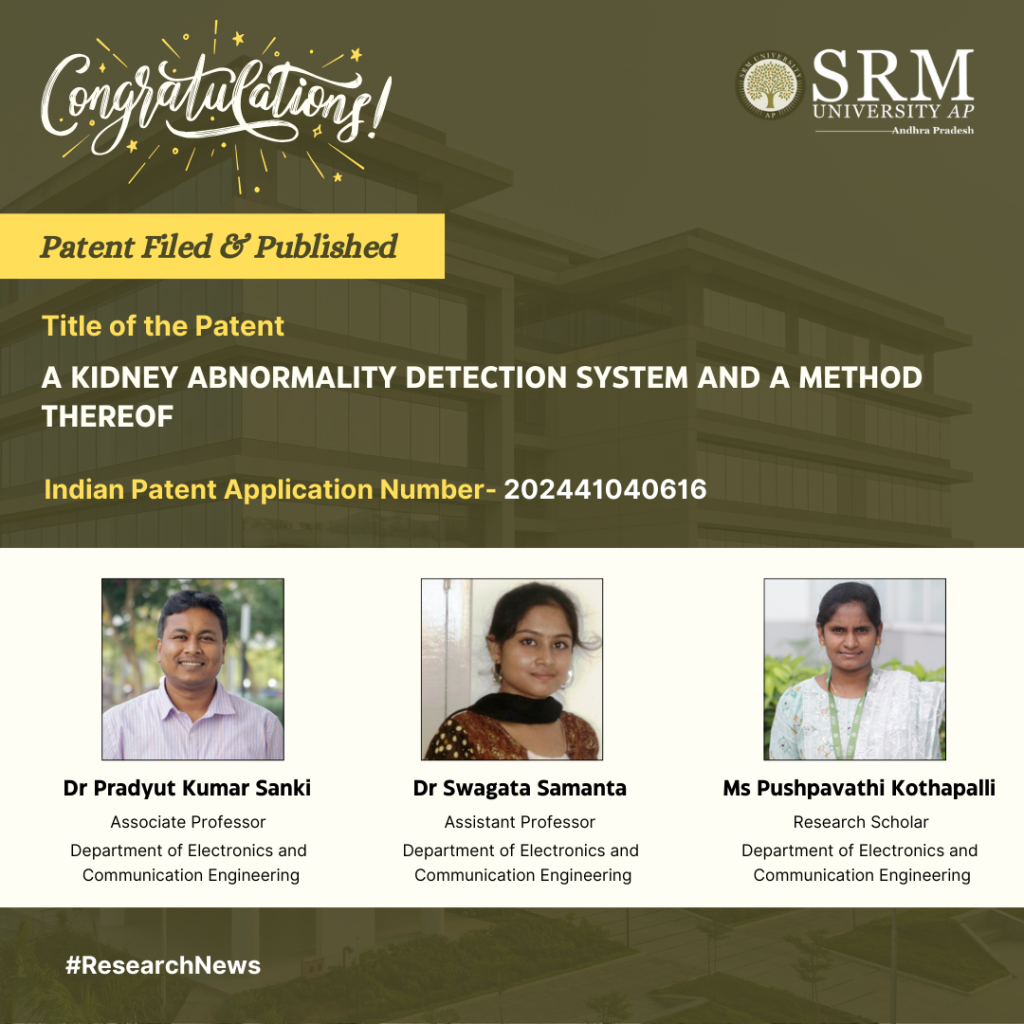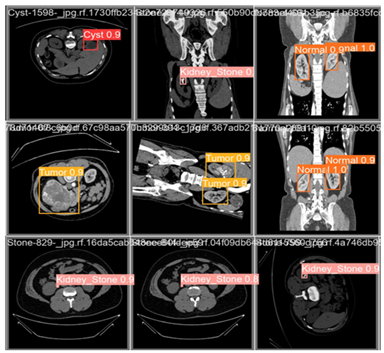
Dr Pradyut Kumar Sanki, Dr Swagata Samanta, and research scholar Ms Pushpavathi Kothapalli from the Department of Electronics and Communication Engineering published their patent titled “A Kidney Abnormality Detection System And a Method Thereof,” with Application No. 202441040616. This innovative method, which utilises advanced deep learning techniques, promises to revolutionise the accuracy and efficiency of kidney disease diagnosis. With the potential for widespread clinical adoption, this technology aims to enhance patient care, offering a brighter future for kidney disease detection and treatment.
Abstract:
This research work aimed to develop a method for detecting kidney diseases, including kidney stones, cysts, and tumors. The method achieved high accuracy in detecting kidney diseases, with a good mean average precision, precision, and recall. The study used techniques to select the most relevant features for kidney disease detection, identifying top features related to blood tests and patient health. The method outperformed other approaches in terms of accuracy, precision, and recall. The study used a comprehensive dataset of kidney disease patients to train and test the method. The results suggest that the method has the potential to be widely adopted in clinical settings, contributing to more accurate and efficient diagnostic tools for kidney disease detection and improving patient care.
Practical implementation:
The practical implementation of our research involves deploying a system for real-time detection and classification of kidney disease, including kidney stones, cysts, and tumors. The method achieved high accuracy in detecting kidney diseases using the Deep learning technique. Our model can quickly identify the disease of the kidney. The study used techniques to select the most relevant features for kidney disease detection, identifying top features related to blood tests and patient health. The method outperformed other approaches in terms of accuracy, precision, and recall. The study used a comprehensive dataset of kidney disease patients to train and test the method. The results suggest that the method has the potential to be widely adopted in clinical settings, contributing to more accurate and efficient diagnostic tools for kidney disease detection and improving patient care.
Future Research Plans:
The future plans for the work on chronic kidney disease (CKD) detection and management involve several key areas:
1. Improved Screening and Diagnosis: Update the United States Preventive Services Task Force (USPSTF) recommendation for CKD screening to reflect current evidence supporting routine screening for high-risk asymptomatic adults.
2. Enhanced Patient Engagement and Person-Centered Care: Advance education of primary care clinicians about CKD risk factors, testing, detection, and interventions that are graded and proportional to the eGFR and uACR risk stratification or heat map.
3. Advancements in Nephrology: Develop novel therapeutic strategies, such as wearable artificial kidneys, xenotransplantation, stem cell-derived therapies, and bioengineered and bio-artificial kidneys, to improve renal replacement therapies and address the shortage of kidney donors.
4. Machine Learning and Predictive Modelling: Continue to evaluate and improve machine learning approaches for early CKD diagnoses, focusing on reducing the number of input features and enhancing the accuracy of prediction models.


